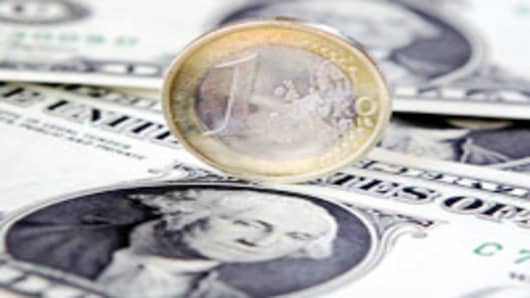This year’s rescue plans for Greece and the euro zone were driven partly by rising US anxiety about the risks to global financial stability stemming from Europe’s slowness to take action, according to those involved in the emergency.
In a three-part series which starts today, the Financial Times reveals that European, US and International Monetary Fund policymakers at the highest levels held two key meetings in Washington in late April that set the framework for the rescue operations.
“The Americans became more and more frantic,” Alistair Darling, then the UK chancellor, told the FT in an interview. “In simple terms, they started saying, ‘What the hell’s going on over there? You guys are being incredibly complacent.’”
His recollections were confirmed by George Papaconstantinou, Greece’s finance minister, who told the FT: “It’s a fair assessment that the US agitation did help to bring things along.”
Euro zone countries and the IMF created a three-year, €110 billion support plan for Greece on May 2. One week later, in the early hours of May 10, European Union finance ministers announced a backstop facility for any euro zone countries that might find themselves in severe difficulties worth as much as €750 billion, including up to €250 billion from the IMF.
These measures not only pulled the euro zone from the abyss but averted the danger that contagion would spread to the rest of the international financial system, not least through private sector banks exposed to hundreds of billions of euros in European sovereign debt.
The first of the two Washington events was a dinner held at the Canadian embassy on April 22, two days before the IMF’s annual spring meetings in the US capital. It brought together several finance ministers and central bankers from the G7 group of advanced industrial countries as well as Dominique Strauss-Kahn, the IMF’s managing director.
“Very serious concerns were expressed about the danger of global contagion,” Olli Rehn, the EU’s monetary affairs commissioner, who attended the dinner, told the FT. “It was clear that the US and IMF would lend support. There was no American Schadenfreude. They were supportive and ready to help with their experience of crisis management.”
Mr Darling, who was also present, said: “The Americans were saying, ‘You have to sort this out and reassure the markets, or else contagion will spread like wildfire.’”
The second meeting took place at Mr Strauss-Kahn’s offices on April 24, when he agreed with Mr Rehn and Mr Papaconstantinou that euro zone countries should contribute two-thirds and the IMF one-third of Greece’s rescue package.
More US encouragement for European action came from a series of telephone calls that Barack Obama, the US president, made to Angela Merkel, Germany’s chancellor, and other EU leaders over the weekend of May 7-9.
Ms Merkel and her chancellery advisers had always supported IMF involvement in the eurozone rescue. But prompt European action in the crisis was hampered by the initial reluctance of other German policymakers, as well as other euro zone governments, to call in the IMF.


